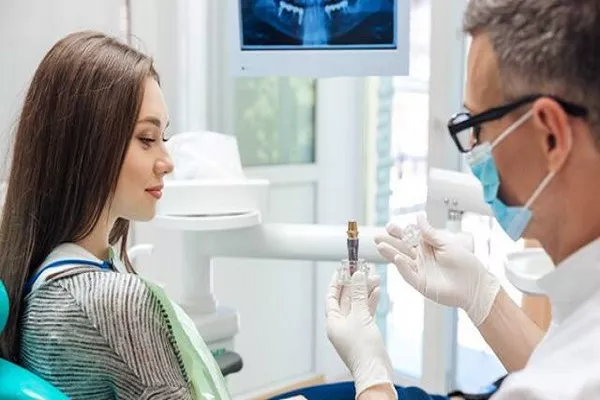In the realm of oral health, one of the most intriguing and frequently discussed topics is the significance of medically necessary orthodontics. This specialized branch of dentistry goes beyond mere aesthetic concerns, delving into the essential role it plays in overall health and well-being. In this comprehensive guide, we will explore the various facets of medically necessary orthodontics, understanding the conditions it treats and the benefits it offers.
Section 1: What Defines Medically Necessary Orthodontics
Medically necessary orthodontics pertains to the orthodontic treatment prescribed by healthcare professionals to address specific oral health conditions that could have severe implications if left unattended. Here, we delve into the different orthodontic conditions that fall under this category.
1.1. Malocclusion: The Misalignment Mystery
A common concern in orthodontics, malocclusion, or misalignment of the teeth, affects millions of people worldwide. Not only can it mar one’s smile, but it can also lead to severe dental issues. Malocclusion can cause difficulties in chewing, speaking, and proper oral hygiene. It can result from various factors, such as genetics, thumb-sucking, or oral injuries.
1.2. Overcrowding: A Space Crunch in Your Mouth
Overcrowding occurs when there isn’t enough space for teeth to grow properly, leading to teeth that overlap or get pushed out of alignment. This condition can result in painful dental issues, making it challenging to maintain good oral health. Furthermore, overcrowding can impact facial aesthetics, affecting one’s self-esteem.
1.3. Jaw Irregularities: Beyond Aesthetics
Jaw irregularities can have a substantial impact on an individual’s oral and overall health. These irregularities can lead to issues with speaking, eating, and even breathing. Moreover, jaw problems can contribute to headaches, neck pain, and temporomandibular joint disorders (TMJ).
1.4. Orthodontic Conditions in Children: Early Intervention Matters
Addressing orthodontic issues in children is crucial, as it can prevent more severe problems in adulthood. Conditions like crossbites, underbites, or overbites should be diagnosed and treated at an early age to ensure proper development and prevent complications later in life.
Section 2: The Benefits of Medically Necessary Orthodontics
Now that we’ve established the various conditions that medically necessary orthodontics can address, let’s explore the significant advantages it offers to patients.
2.1. Improved Oral Health
Orthodontic treatment, when medically necessary, can significantly enhance oral health. By correcting issues like misalignment and overcrowding, patients can improve their ability to maintain proper oral hygiene. This, in turn, reduces the risk of tooth decay, gum disease, and other dental problems.
2.2. Enhanced Aesthetic Appeal
While medically necessary orthodontics primarily focuses on health, it also delivers aesthetic benefits. A well-aligned smile boosts an individual’s confidence and self-esteem. Properly aligned teeth contribute to a more appealing appearance, positively impacting personal and professional relationships.
2.3. Prevention of Complications
Addressing orthodontic issues promptly can prevent complications that might arise if left untreated. For example, untreated malocclusion may lead to speech difficulties, excessive wear and tear on teeth, and even temporomandibular joint disorders (TMJ).
2.4. Long-term Cost Savings
Investing in medically necessary orthodontic treatment may appear costly initially, but it can save money in the long run. Preventing dental issues and complications that might require extensive treatments or surgeries can be financially advantageous.
Section 3: Health Insurance and Orthodontic Coverage
One key aspect of medically necessary orthodontics is understanding how health insurance factors into the equation. Many individuals wonder if their insurance plans cover these essential treatments. Here, we delve into the nuances of health insurance and orthodontic coverage.
3.1. Evaluating Insurance Plans
When considering orthodontic treatment, it’s crucial to review your health insurance policy. Some insurance plans provide partial coverage for medically necessary orthodontics, while others may offer no coverage at all. It’s essential to understand the terms and conditions of your insurance policy to plan your orthodontic journey effectively.
3.3. Alternative Financing Options
For those whose insurance plans do not cover medically necessary orthodontics or provide limited coverage, there are alternative financing options available. Many orthodontic practices offer payment plans or financing arrangements to make these vital treatments accessible to a broader range of patients.
Conclusion
Medically necessary orthodontics is more than just a matter of aesthetics; it is a crucial aspect of overall health and well-being. Addressing conditions such as malocclusion, overcrowding, and jaw irregularities can lead to a healthier, more confident life. Understanding the role of health insurance and exploring alternative financing options ensures that individuals receive the necessary care they deserve. By prioritizing oral health, individuals can unlock the benefits of a beautiful, confident smile while safeguarding their long-term well-being.
Related Links:
How does invisible aligners work?
How to fix overbite teeth at home?
Why do my teeth click when i push on them?
































